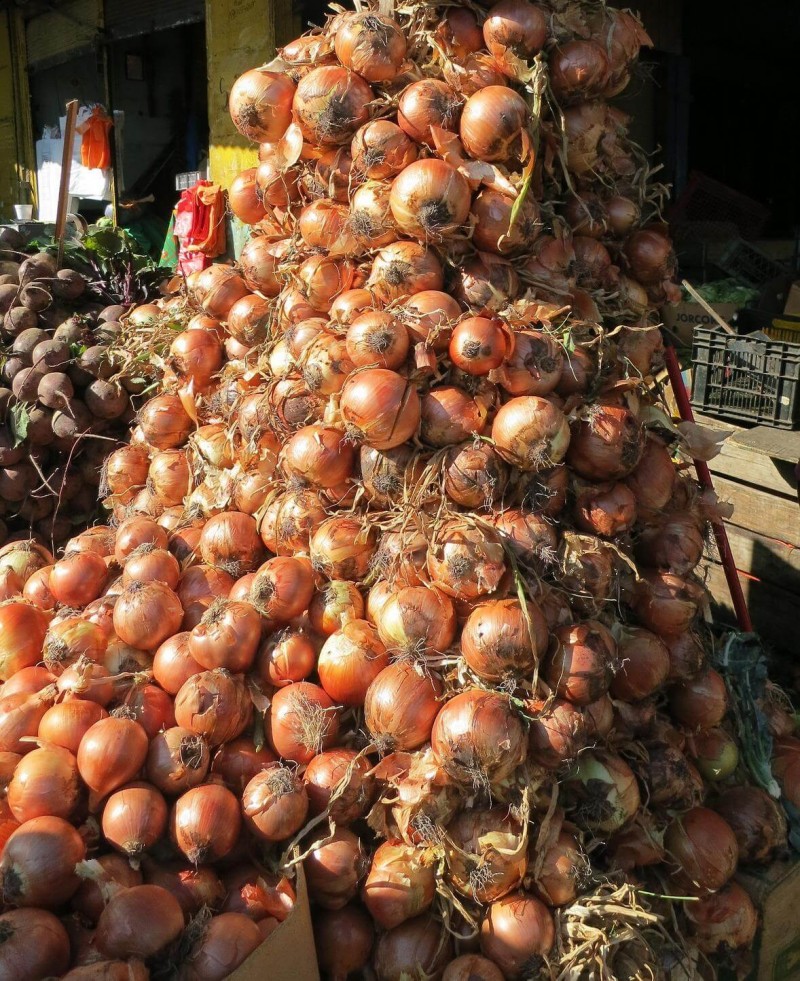Onion is quintessential commodity which is integral part of everyday diet of most of the Indians. It’s also a commodity which is equally used by a daily wage labour as a main course with pain roti (bread) or as part of salad and various Indian curries by rich and famous eating in star hotels. It’s also the only vegetable which as the power to overthrow Governments.
Onion retail and wholesale prices in Indian market has soared in the past few months. According to recent news reports, the prices are expected to touch INR 100/Kg. making onions far costlier than most of the pulses which contain more nutrients than onions.
To analyse the increase in the price of onions we will have to first understand the trading pattern for this commodity.
The export-import (EXIM) scenario of onions is highly skewed in the favour of exports as explained below:
EXIM Scenario of Onions in India
1.1 Export Scenario for Onions
India’s export of onions was at US$ 143.36 million in 2004-05 which rose to US$ 376.39 million in 2014-15. India exported US$ 3.71 billion worth of onions during this period.
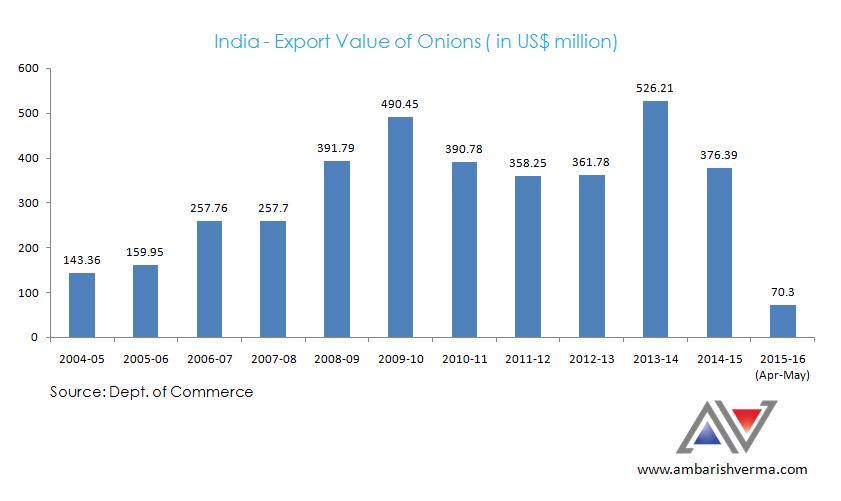
The export quantity which was at 870.22 thousand metric tons in 2004-05 also increased and reached 1238.10 thousand metric tons in 2014-15. The overall exported quantity was 14364.28 thousand metric tons between 2004-05 and 2014-15.
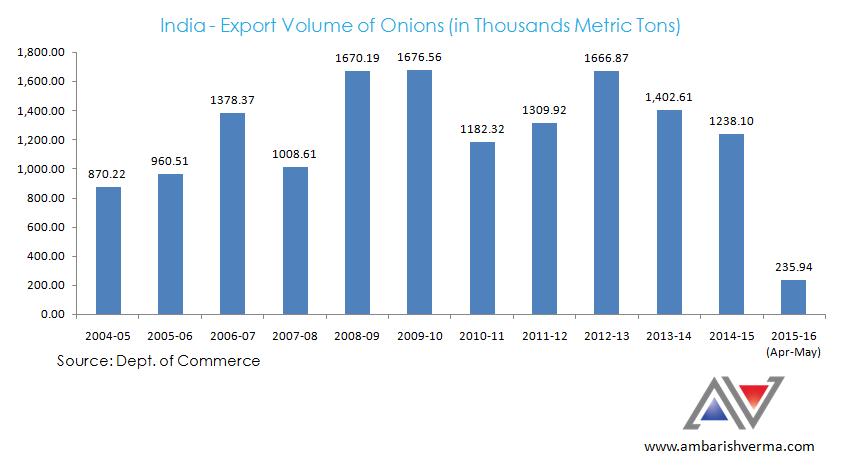
1.2 Top 5 Nations Importing Onions from India
Bangladesh, Malaysia, Sri Lanka, UAE and Nepal were the top five nations importing Indian onions in 2014-15. India exported onions worth US$ 301.17 million to these five countries which represents 80.02% of the overall onion export from India in 2014-15.
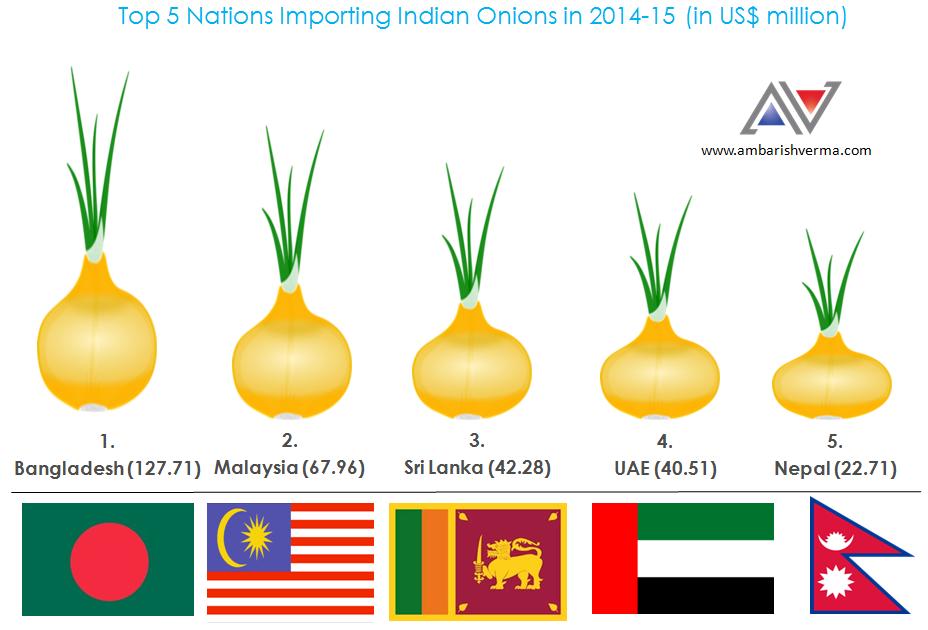
2.1 Import Scenario for Onions in India
India’s import of onions was at US$ 1.86 million in 2005-06 which became US$ 0.25 million in 2014-15. India imported large quantities of onions ease out the onion shortage in year 2010-11 and 2013-14.
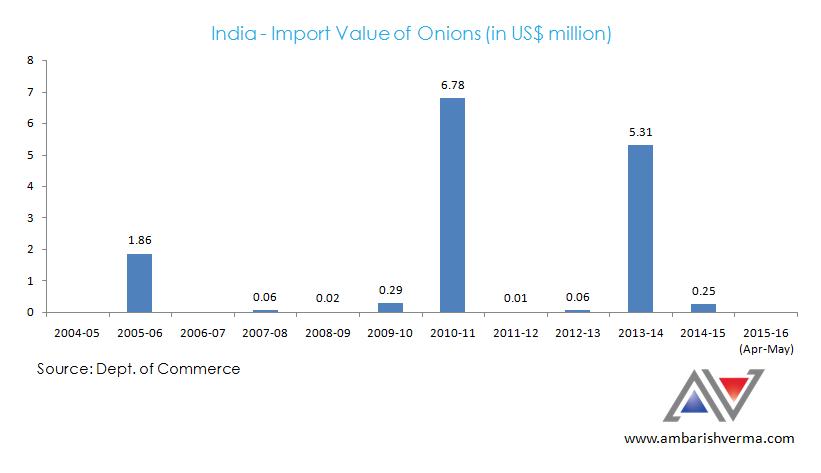
The overall imported quantity for onions was 39.02 thousand metric tons between 2004-05 and 2014-15.
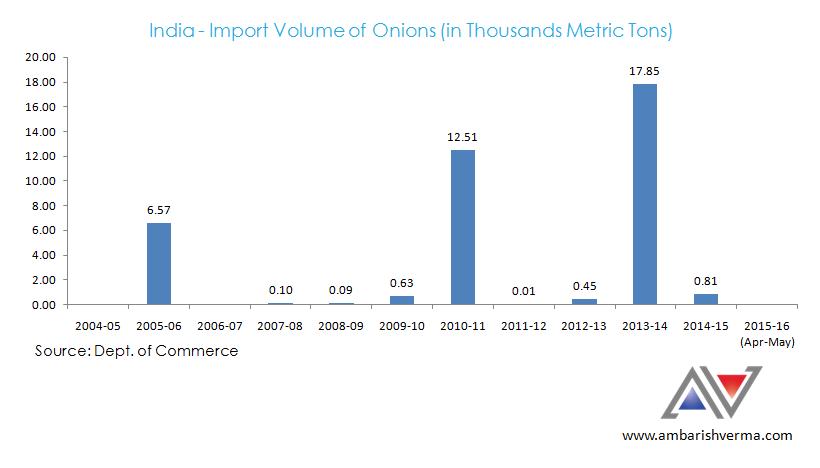
2.2 Top Nations Exporting Onions to India
Egypt and Afghanistan were the top nations exporting onions to India in 2014-15. India imported onions worth US$ 0.25 million from these countries which represents 100% of the overall onions import in India in 2014-15.
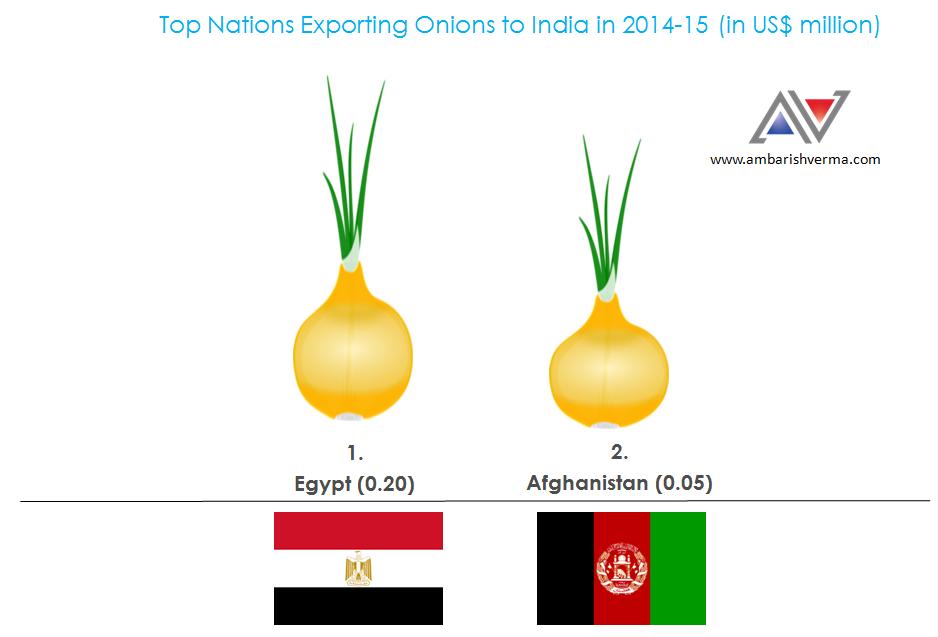
Reasons for Rising Onion Prices in India
Reason 1 – Weather Affected Low Crop Yield
45% of all onions produced in India come from two states i.e. Maharashtra and Karnataka. Unseasonal rains and flooding causes major crop damage and affects the crop yield for onions.
Reason 2 – Lack of Cold Storage Facilities
According to a recent report on Cold Storage Market in India, currently India has 6156 cold storage facilities across various states with total capacity of 28.68 MMT which is insufficient. Due to lack of cold storage facilities, India has wastage of more than 450MMT every year which leads to a huge amount of loss, and leads to shortage in the overall generation capability.
Reason 3 – Poor Supply Chain
Most of the commodity trading market in India is unregulated. This is more evident in case of vegetables which have less shelf life and thus data about their movement changes on daily basis. The supply chain at each level marks ads its own mark up as explained in the following value chain:
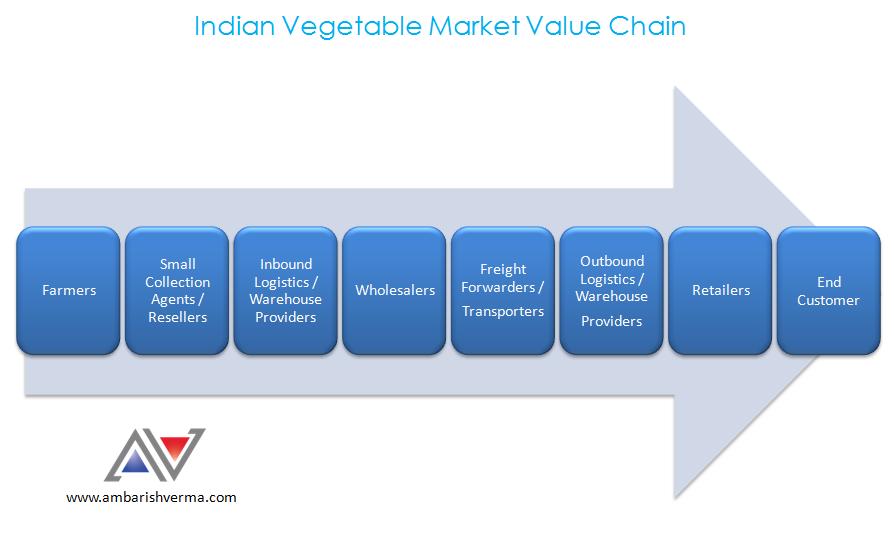
Reason 4 – Unchecked Export of Onions
It is clear from the 2010, 2013 and the current onion crisis that the Government lacks a mechanism to forecast the consumption and availability of onions in the market. The export also largely is unchecked which always manages to catch the authorities off-guard. This is evident from the fact that in the months of Aril-May 2015 India exported 235.94 thousand metric tons of onions worth US$ 70.30 million despite the cues in the market about rising prices.
Reason 5 – Hoarding by Wholesalers and Retailers
Due to the unregulated nature of commodities like vegetables, hoarding is rampant at each level of supply chain. Odisha, Telangana and West Bengal are the only states who have notified stock limits for traders to store onion at any given point of time.
How to Control Onion Prices in India?
Solution 1 – Upgrade the Forecasting Infrastructure
The saying goes as “Once bitten, twice shy” but Indian Government doesn’t seem to learn from its mistakes of 1998, 2010 and 2013. There has to be a qualitative mechanism to forecast availability and consumption of not only onions but all essential commodities. This can also help Government curb black marketing of these essential commodities. This can though be only achieved when all central and state governments work together.
Solution 2 – Increase Cold Storage Infrastructure
What is the point of producing any commodity when they all are not going to be safeguarded and wasted in the end? Government bodies like Food Corporation of India (FCI) have admitted wastage of Lakhs of metric tons of food grain in the past. Also the availability of cold storage facilities is inadequate. If India wants to save its farmers from suicide and increase overall economic growth then it needs to address these issues on war footing.
Solution 3 – Monitor the Exports and Hoarding by Wholesalers and Retailers
This can be easily achieved by Government with the already available means and resources. The cartels formed by wholesalers and retails to artificially create high prices of essential commodities needs to be broken as soon as possible.
Solution 4 – Creation of Centralized Commodity Bank
One suggestion can be that Government creates commodity bank like Reserve Bank of India in PPP model which can provide following services:
- Storage of commodities by farmers in the commodity bank – This will ensure that farmers get fair market price for their produce.
- Distribution of commodities to various stakeholders like wholesalers and retailers.
- Food processing and preservation of commodities – The government is already planning to create food processing parks in India which can benefit from getting raw materials at a fair price. This will also enable India increase its revenue by increase export of these processed items.
There are already mechanisms in place (like Hopcoms stores in Karnataka) which are doing similar activities but it has not been achieved at a scale which can really help solve the problem to a great extent.
Hope this article reaches to decision maker who can rise above petty politics and really make the difference.
If you have any other suggestions which can be used to solve this menace, feel free to leave a comment.


